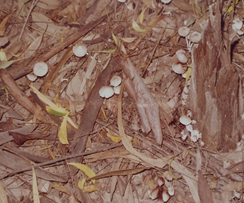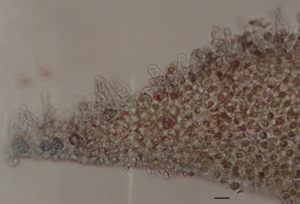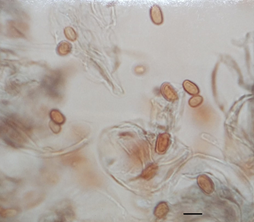Homophron spadiceum (P. Kumm.) Örstadius & E. Larss., Mycological Progress 14 (5/25): 35 (2015) Fig.6
MycoBank number: MB 811631; Index Fungorum number: IF 811631; Facesoffungi number: FoF 10771;
Current name: Homophron spadiceum (P. Kumm.) Örstadius & E. Larss., Mycological Progress 14 (5/25): 35 (2015)
Basionym: Psilocybe spadicea P. Kumm., Der Führer in die Pilzkunde: 71 (1871)
Taxon Synomyms: Agaricus spadiceus Schaeff., Fungorum qui in Bavaria et Palatinatu circa Ratisbonam nascuntur Icones 4: 27, t. 60 (1774)
Psathyrella spadicea (Schaeff.) Singer, Lilloa 22: 468 (1951)
Drosophila spadicea (Schaeff.) Quél., Enchiridion Fungorum in Europa media et praesertim in Gallia Vigentium: 116 (1886)
Pratella spadicea (Schaeff.) J. Schröt., Kryptogamen-Flora von Schlesien 3.1 (33-40): 568 (1889)
Agaricus stipatus Pers., Synopsis methodica fungorum: 423 (1801)
Agaricus fuscescens Batsch, Elenchus fungorum: 77 (1783)
Psilocybe spadicea var. spadicea (?) [MB#419905]
Pilosace spadiceus (Schaeff.) Kuntze: 504 (1898)
Pileus 3..0 – 8.0 cm in diameter, dark brown to chocolate brown when moist, , fading to pale buff, fleshy, globose, convex then plane to broadly umbonate,surface hygrophanous, glabrous.
Stipe length 4.0– 8.0cm × 0.5– 1.0 cm in diameter, white, discolouring to reddish-brown towards the base,cylindrical,slightly curved, fibrous-fleshy, fistulose, with a white mycelial base, veil absent. Lamellae white to pinkish, finally purplish- brown,adnate-sinuate, edge white, pruinose. Spores 7.5 – 10.0 × 4.0 –5.2µm, oblong to ellipsoid, with athin-pale, reddish brown wall and a minute germ-pore. Basidia 4-spored, clavate in shape.Lamellae edge sterile with crowded cheilocystidia having a thick wall and crystalline encrusted mucronate apex. Pleurocystidia venticose fusoid, mucronate, apically encrusted, hyaline with a thickened wall , particularly towards the apex.
Ecology and distribution – Homophron spadiceum is found North America, Central Europe, Asia, Africa, South America (Guzmán 1970, Sulzbacher et al. 2013) and Brazil (Gurgel et al. 2008, Montagner et al. 2015), Mexico (Guzmán et al. 2013) and Argentina (Nouhra et al. 2012). Presently, it has been reported from Mount Abu, Sirohi district of Rajasthan and was found growing alone, scattered, or gregarious, widespread after rainfall and is ectomycorrhizal with gymnosperm trees like Pinus roxburghii and Grewellia robusta.
Specimens Examined – JNV/Mycl/ 1029/2018, by Reenu Chouhan, July 11, 2018, JNV/Mycl / 1053.24° 31′ 53.2020” N and 72° 44′ 0.0960” E Mount Abu, 24°53’18.17″N and 72°50’52.58″E Sirohi, elevation: 321 m (1,053 ft.).

a

b

c
Fig. 6( a.) Lignicolous habit of Homophron spadiceum ( b)Hymenium layer showing distinct Cheiolocystidia(c) Spores Scale bar b =10 µm, c =10 µm
